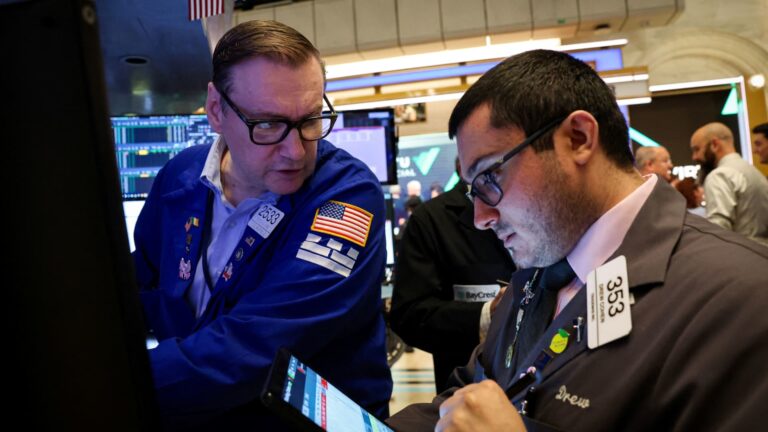Traders work on the floor at the New York Stock Exchange (NYSE) in New York City, U.S., June 17, 2025.
Brendan McDermid | Reuters
The S&P 500 was lower on Tuesday as investors pored through the latest developments in the Middle East, with the conflict between Israel and Iran raging on. Wall Street also digested weak retail sales data.
The broad market index shed 0.6%, while the Nasdaq Composite traded down 0.7%. The Dow Jones Industrial Average lost 220 points, or 0.5%.
President Donald Trump threatened Iran’s leader in a series of Truth Social posts Tuesday and demanded “UNCONDITIONAL SURRENDER!”
“We know exactly where the so-called ‘Supreme Leader’ is hiding,” the president wrote in one of the posts. “He is an easy target, but is safe there – We are not going to take him out (kill!), at least not for now. But we don’t want missiles shot at civilians, or American soldiers. Our patience is wearing thin.”
On Monday evening, Trump said in another post that “Everyone should immediately evacuate Tehran.” He also left the G7 summit in Canada early to deal with the situation in the Middle East, but did so without reaching trade deals with some member nations.
French President Emmanuel Macron said Monday that Trump offered a ceasefire between Iran and Israel. However, Trump said his departure from the G7 had “nothing to do with a Cease Fire. Much bigger than that.”
“We’re all in a bit of a limbo in terms of whether anything substantive came out of the summit and whether Trump was alluding to new information with his post and his early G7 meeting departure,” Deutsche Bank strategist Jim Reid wrote.
Oil prices popped as the conflict escalated, reversing course from Monday’s declines that were fueled by signs Iran wanted a ceasefire with Israel. West Texas Intermediate crude futures and Brent futures each advanced about 3%.
A weakening consumer
On top of a fifth day of strikes between Israel and Iran, fresh retail sales data weighed on stocks Tuesday, as consumer spending retreated more than expected in May. Sales dipped 0.9% on the month, worse than the Dow Jones forecast for a 0.6% fall.
“The economy is slowing with consumers nervous about exactly what lies ahead and are choosing to save overall rather than flash some cash at the shops and malls,” said Chris Rupkey, Fwdbonds chief economist.
The data comes ahead of the Federal Reserve’s meeting this week, where the central bank is largely expected to hold rates steady. Ross Mayfield at Baird thinks it’s “too late” for the central bank to change its course in response to the retail sales data, but he believes the weaker report could give the Fed some room to take a more dovish stance.
“I definitely think that you want to see some dovish language acknowledge the economy cooling,” the investment strategist told CNBC. “July should be a live meeting, even though the fed funds futures aren’t pricing it in.”
Markets were last pricing in two quarter-percentage-point cuts this year, starting at the Fed’s September meeting, per CME Group’s FedWatch tool.
